News (2021)
Congratulations to Semih Filiz
December 17, 2021
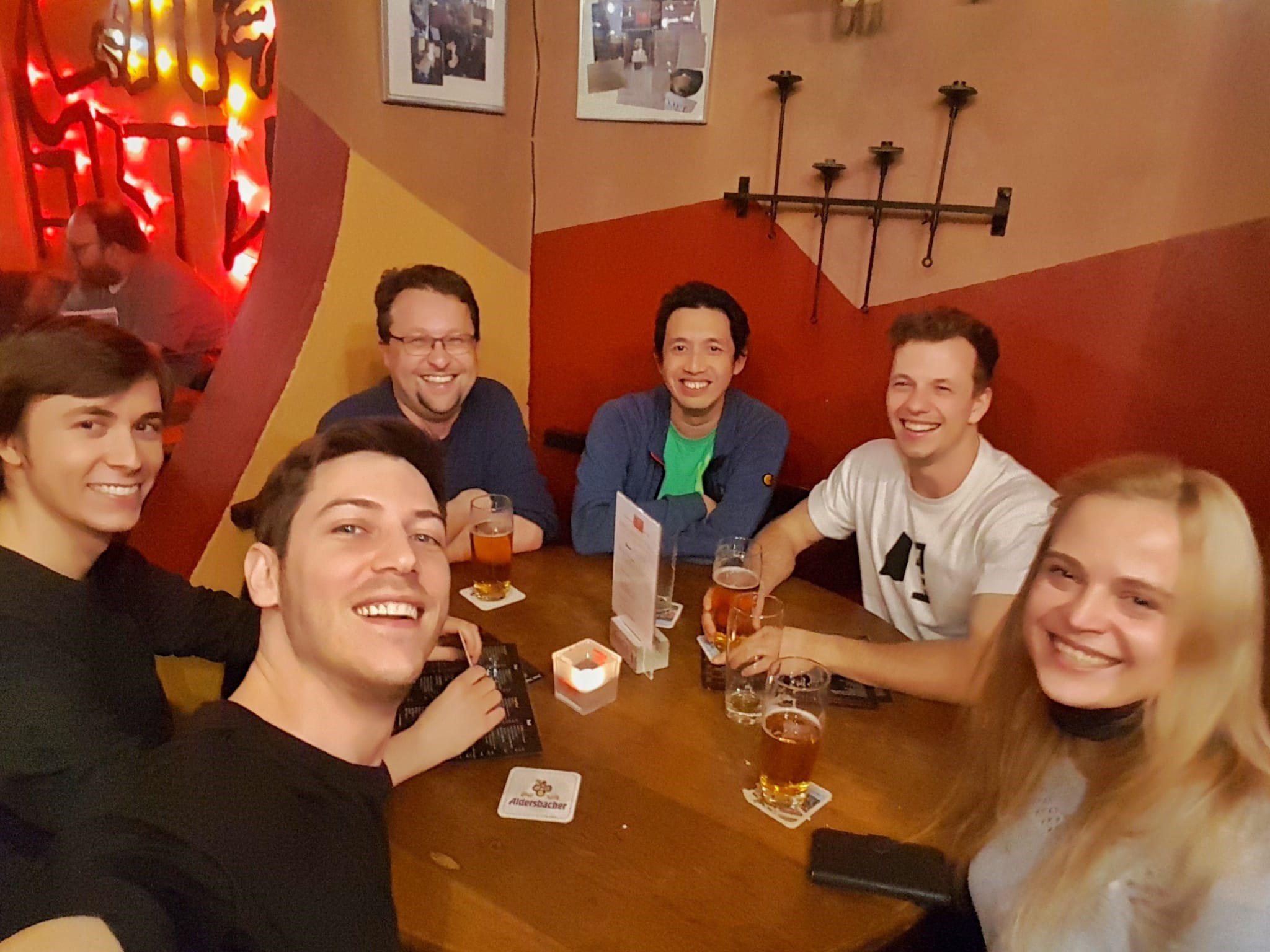
Farewell pub evening.
On November 25 Semih Filiz successfully completed his master's thesis entitled "Photometric and Spectroscopic Variability of White Dwarfs Showing Ultra-High Excitation Lines". In January he will start working as a PhD student with Prof. Klaus Werner at the Institute for Astronomy and Astrophysics in Tübingen.
Observers meet theorists
October 29, 2021
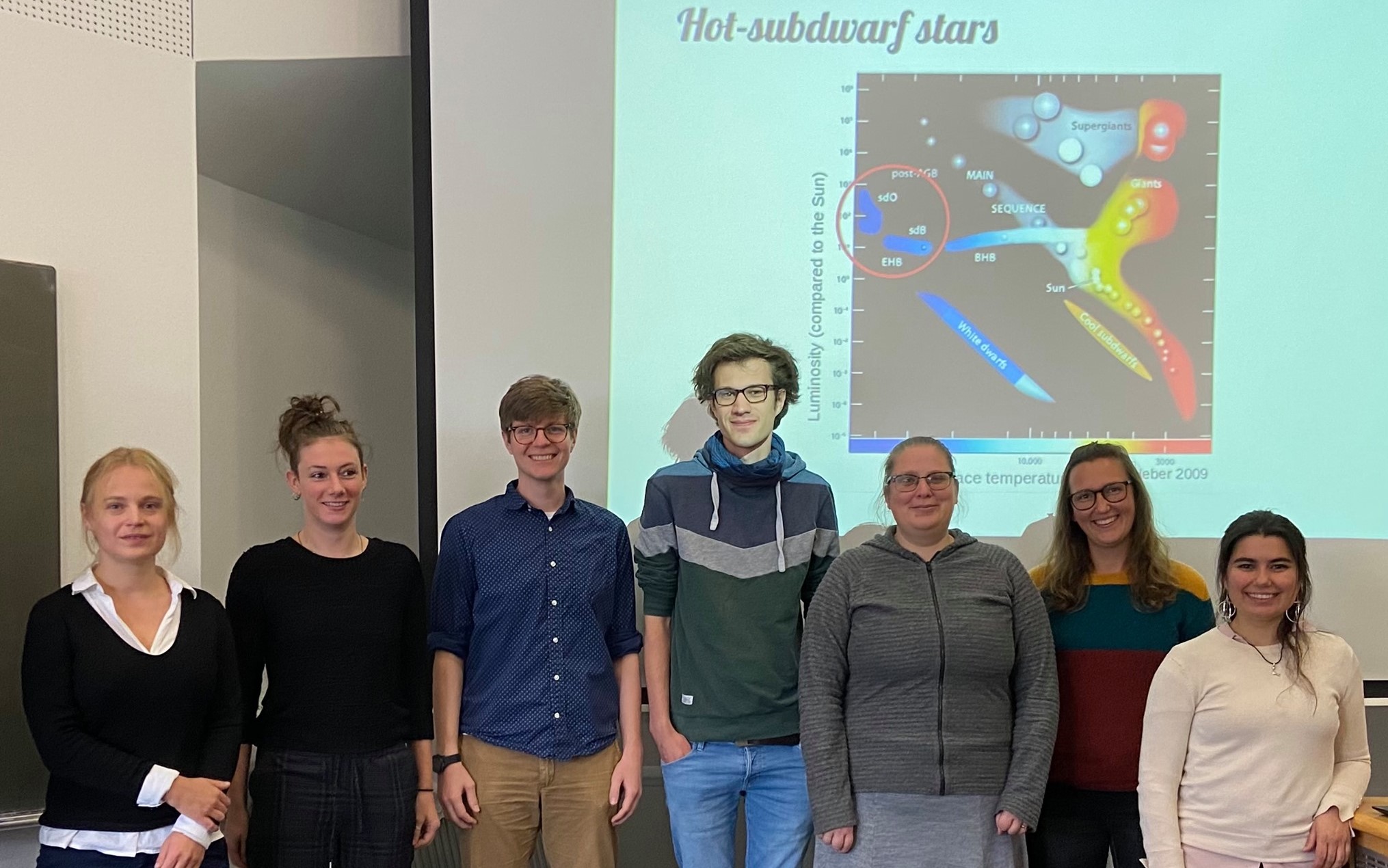
From 18.10. to 22.10. our group visited the Max Planck Institute for Astrophysics in Garching, one of the leading institutes to study theoretical astrophysics in the world. Our hosts Tiara Battich, Patrick Neunteufel and Selma de Mink very kindly organized a small workshop with talks and lively discussion sessions. We had a great time and came back with many new insights and ideas.
Finding needles in a haystack
October 28, 2021
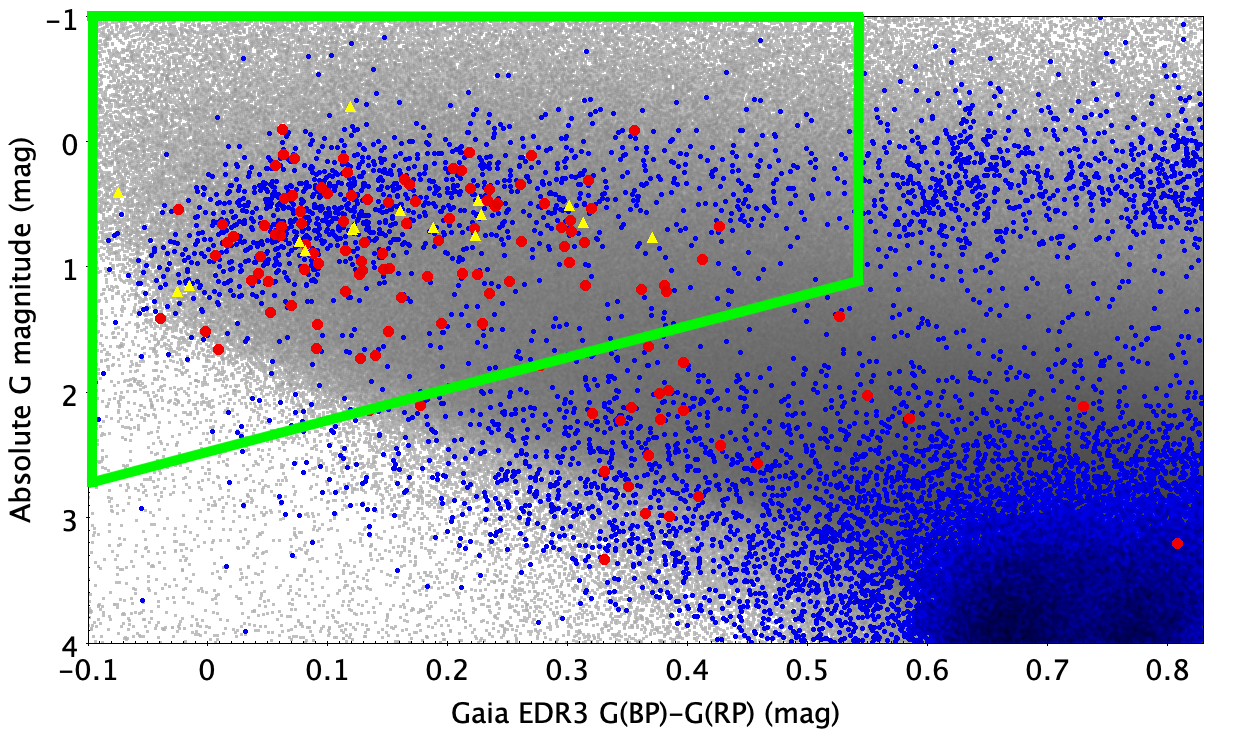
Target selection in the Gaia color-magnitude diagram. Image credit: Astronomy & Astrophysics.
We have used the latest data release from the European Space Agency's Gaia space observatory to identify a large catalogue of blue horizontal-branch (BHB) stars. These stars are very old, post red-giant branch objects that are useful in studying galactic structure in the distant past. BHB stars have the same absolute magnitude and colour as the much commoner main-sequence A- and B-type stars making them difficult to identify. The great improvement in the quality of Gaia's astrometric and photometric measurements in the latest data release has meant that we are able us to focus on the much older galactic halo where main-sequence stars are not expected. In this way we were able to find the proverbial needles in a haystack where 57,000 BHBs were found in a "haystack" of around 10 million stars of similar absolute magnitudes and colour. The catalogue generated by Rick Culpan, Dr. Ingrid Pelisoli, and Prof. Stephan Geier has now been published in Astronomy & Astrophysics.
Research workshop at Ondrejov Observatory
October 5, 2021
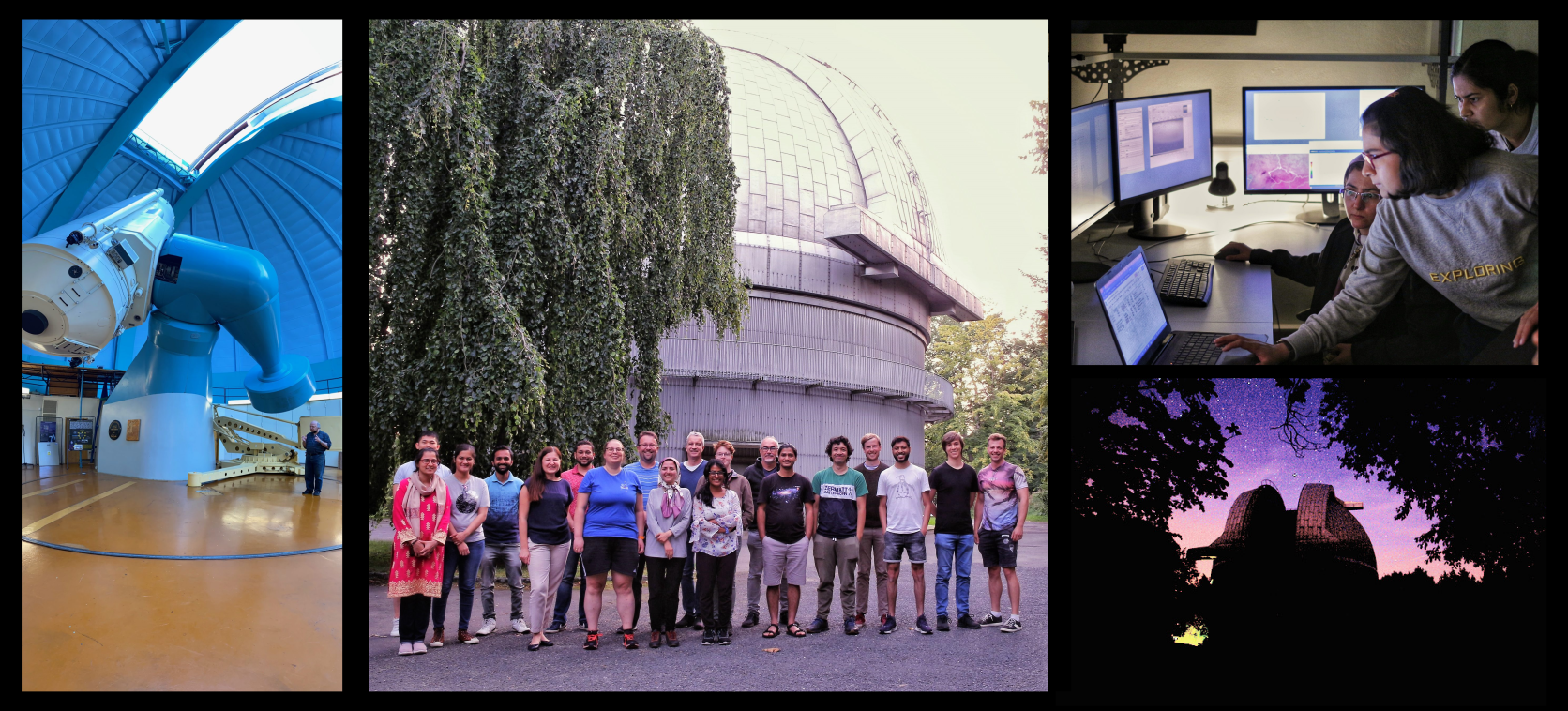
From September 5 to 17 we organized a joint research workshop together with our colleagues from Ondrejov Observatory in Czech Republic. Students from Potsdam and the Masaryk University in Brno had the opportunity to plan and conduct astronomical observations and learned how to process and analyse data taken in the course of research projects conducted by our group. Furthermore, the students experienced the real life of an astronomer while staying at the observatory.
sdOB9.5 held in Potsdam
August 31, 2021
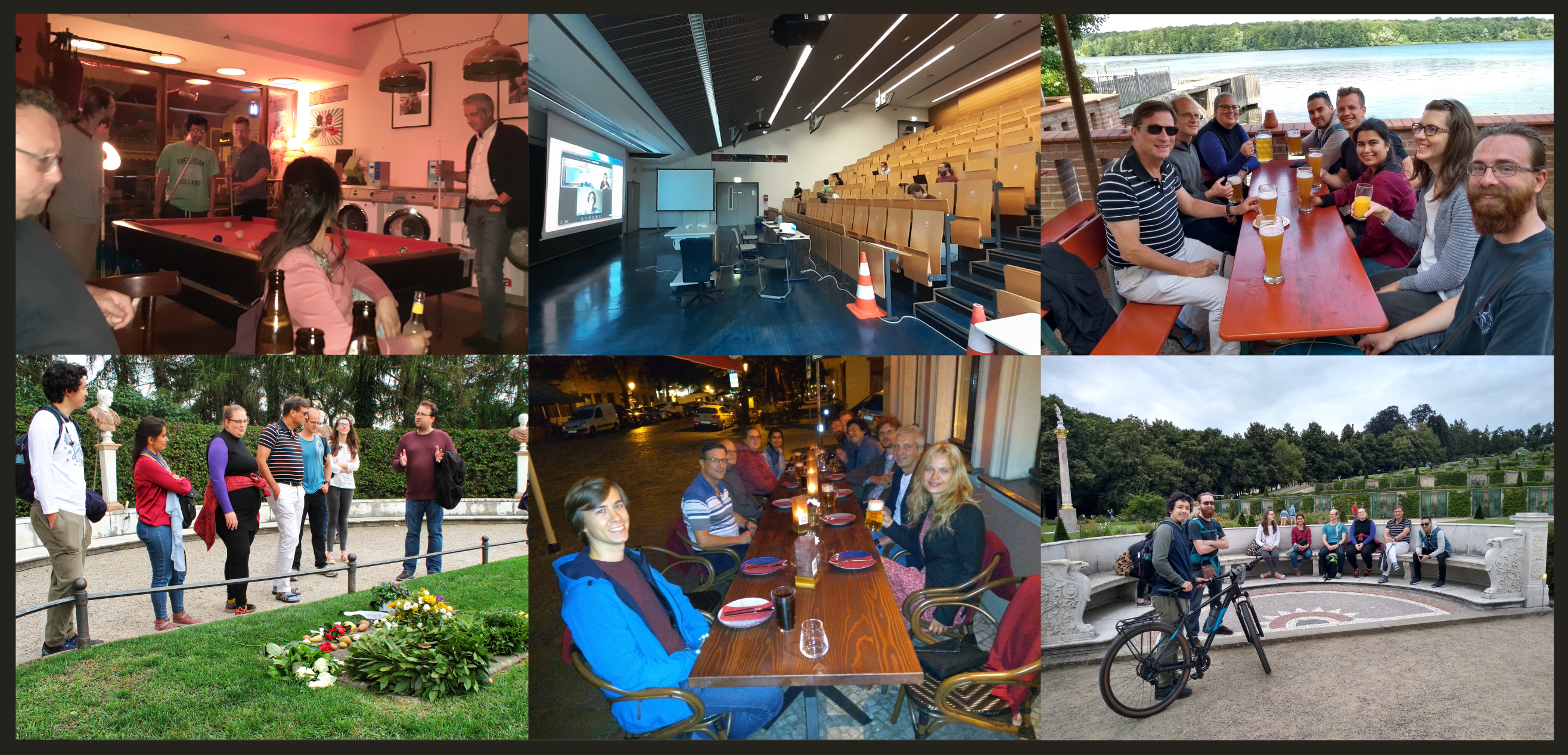
From August 16 to 19 we hosted the hot subdwarf meeting, the sdOB9.5, in Potsdam. This workshop allowed us to bring each other up to date on our projects and to meet new members of our community. Since the meeting was held partly in person, we were also finally able to enjoy an extensive social program again.
Congratulations to Olga Lebiga
July 16, 2021
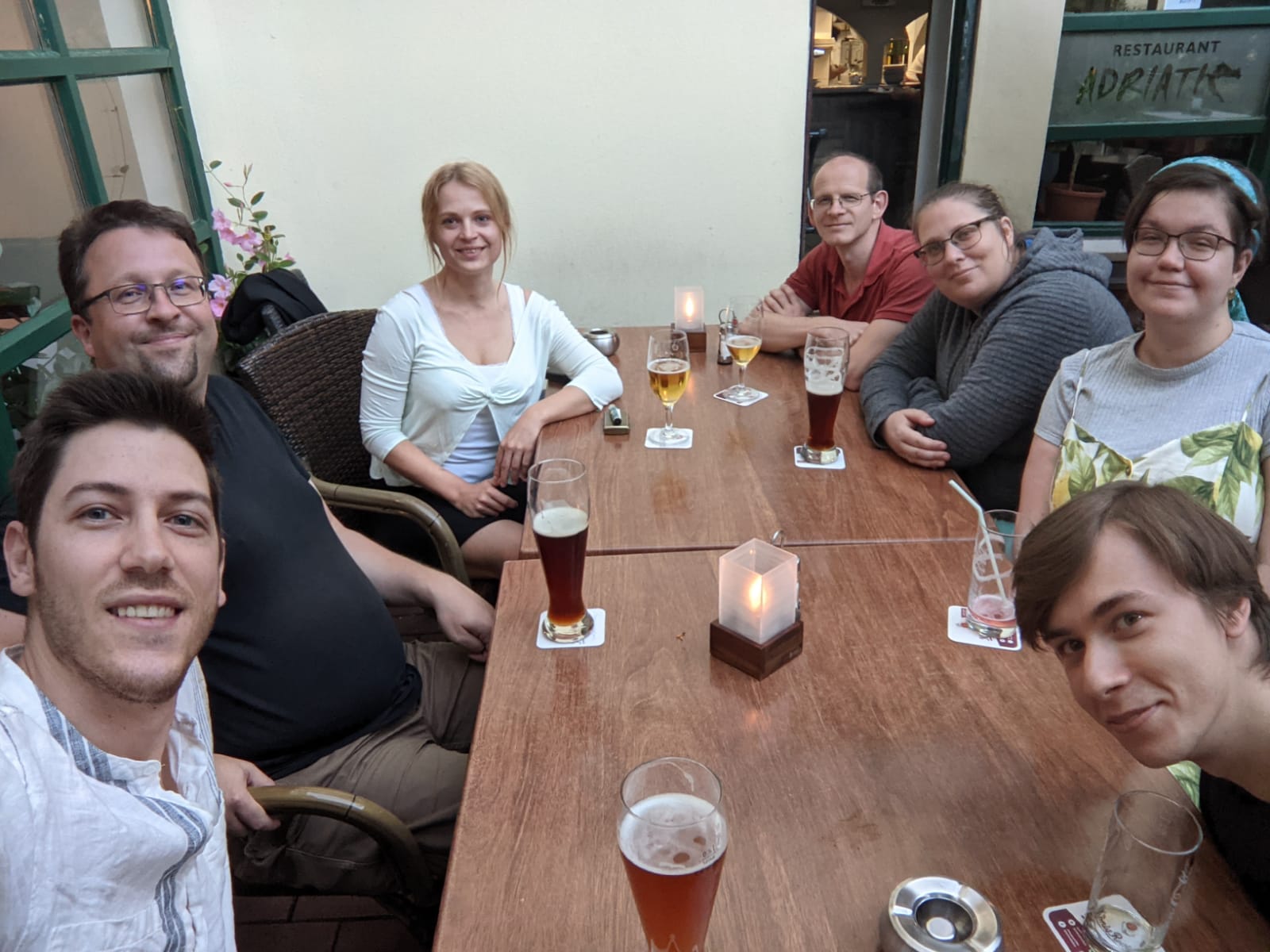
First in-person farewell dinner after more than half a year of social distancing.
On July 8 Lebiga successfully completed her master's thesis entitled "Investigating the effect of a circumbinary disk on Main Sequence star abundance patterns". We wish her all the best for her future!
Teardrop star reveals hidden supernova doom
July 14, 2021
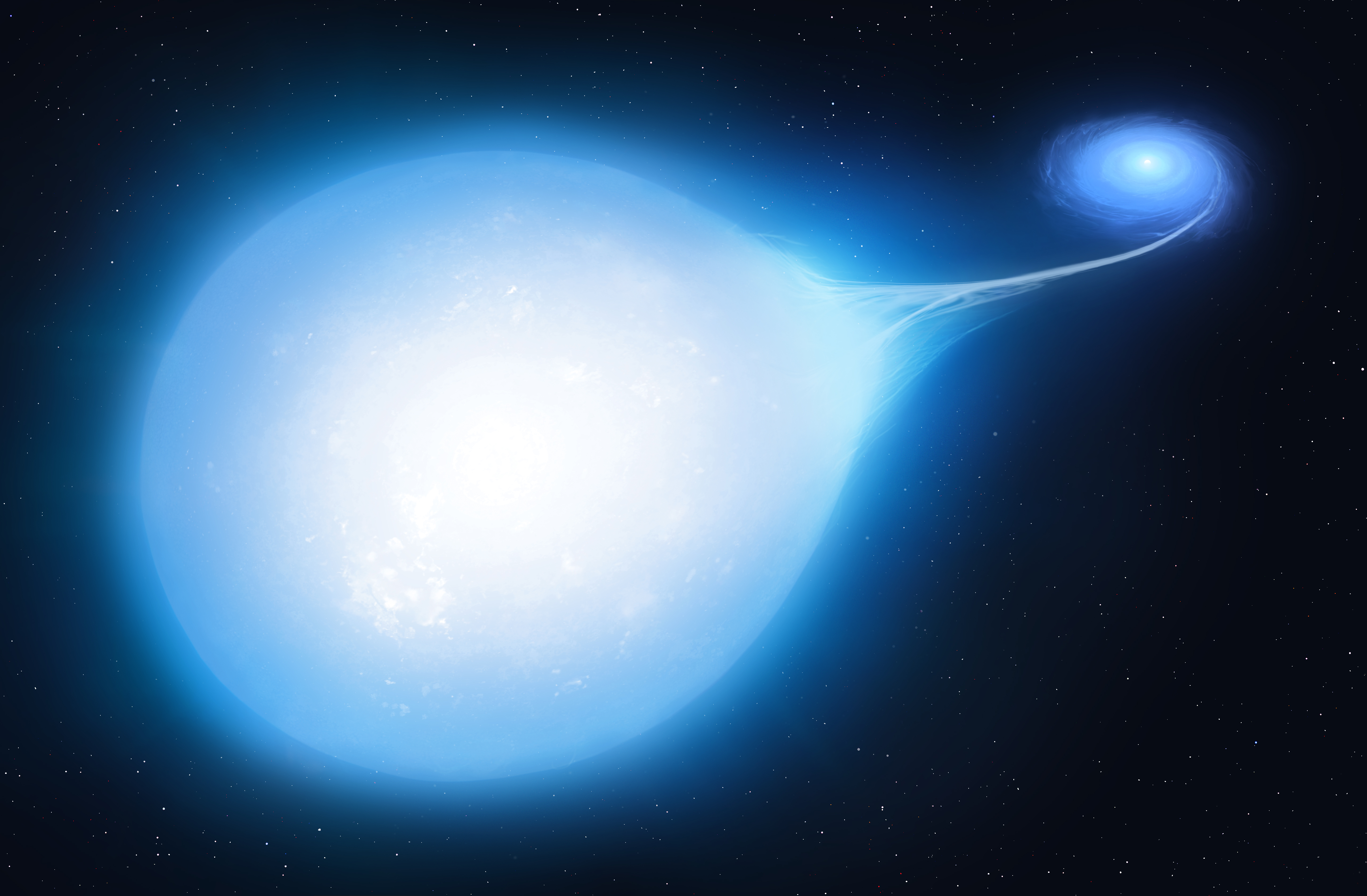
Artist's impression of the HD265435 system at around 30 million years from now, with the smaller white dwarf distorting the hot subdwarf into a distinct "teardrop" shape. Image credit: University of Warwick/MarkGarlick.
In a paper published in Nature Astronomy and led by Ingrid Pelisoli
we made a rare sighting of a binary star system heading towards a supernova. The tragic teardrop-shape of the system is caused by a massive nearby white dwarf distorting the
other star with its intense gravity, which will also be the catalyst for an eventual supernova that will consume both. It is one of only very small number of star systems that
have been discovered that will one day see a white dwarf star reignite its core. The binary star system HD265435 comprises a hot subdwarf star and a white dwarf star orbiting
each other closely at a rate of around 100 minutes. The total mass of the system exceeds the Chandrasekhar limit and the two objects will eventually merge and explode as
thermonuclear supernova type Ia. The binary has been discovered due to characteristic variations in it's TESS light curve caused be the ellipsoidal deformation of the hot subdwarf.
Press releases: University of Warwick,
University of Potsdam,
Keck Observatory
Congratulations to Harry Dawson
May 11, 2021
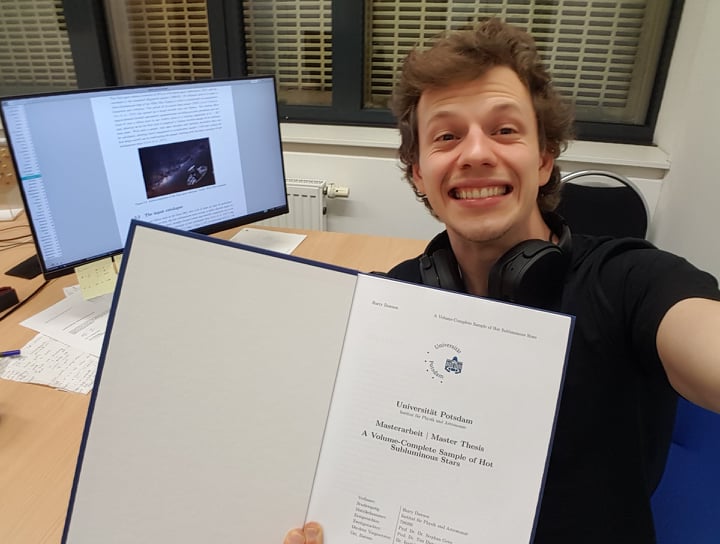
Harry Dawson.
On March 23 Harry Dawson successfully completed his master's thesis entitled "A Volume-Complete Sample of Hot Subluminous Stars". He will now continue working with us as a PhD student.
New class of variable stars discovered
April 2, 2021

TESS light curves of two very hot white dwarfs showing absorption lines of highly excited metals in their spectra. Image Credit: A&A.
When stars enter the white dwarf cooling sequence, something very strange happens. About 10% of the youngest white dwarfs suddenly show absorption lines of highly excited metals in their spectra. This requires far higher temperatures than a typical white dwarf could possibly generate. About two years ago, Nicole Reindl - open topic research fellow in our group - discovered one of those objects to be a variable star and proposed, that magnetic fields are responsible for the observed peculiarities. The star's magnetic field can trap material flowing away from the surface, shocking it to the extreme temperatures needed to strip away electrons and produce the tell-tale signs of ionisation in heavier elements. Nicole Reindl and several other members of our group now investigated the light curves of all other white dwarfs showing these highly excited metals. The study, now published in Astronomy & Astrophysics, shows that indeed the majority of these objects is variable and provides further support for the magnetic field theory.
Online Meetings on Evolved Stars and Systems
February 15, 2021

Together with some interantional colleagues, Nicole Reindl - open topic research fellow in our group - is organising the seminar series "Online Meetings on Evolved Stars and Systems (O-MESS)". It aims to alleviate the cancellation of many in-person meetings on our beloved compact stars and systems and get you up-to-date on the newest findings in the field of white dwarfs, hot subdwarfs, central stars of planetary nebulae, and related systems. Have a look here to find out more.
Congratulations to Alexander Bastian
February 1, 2021
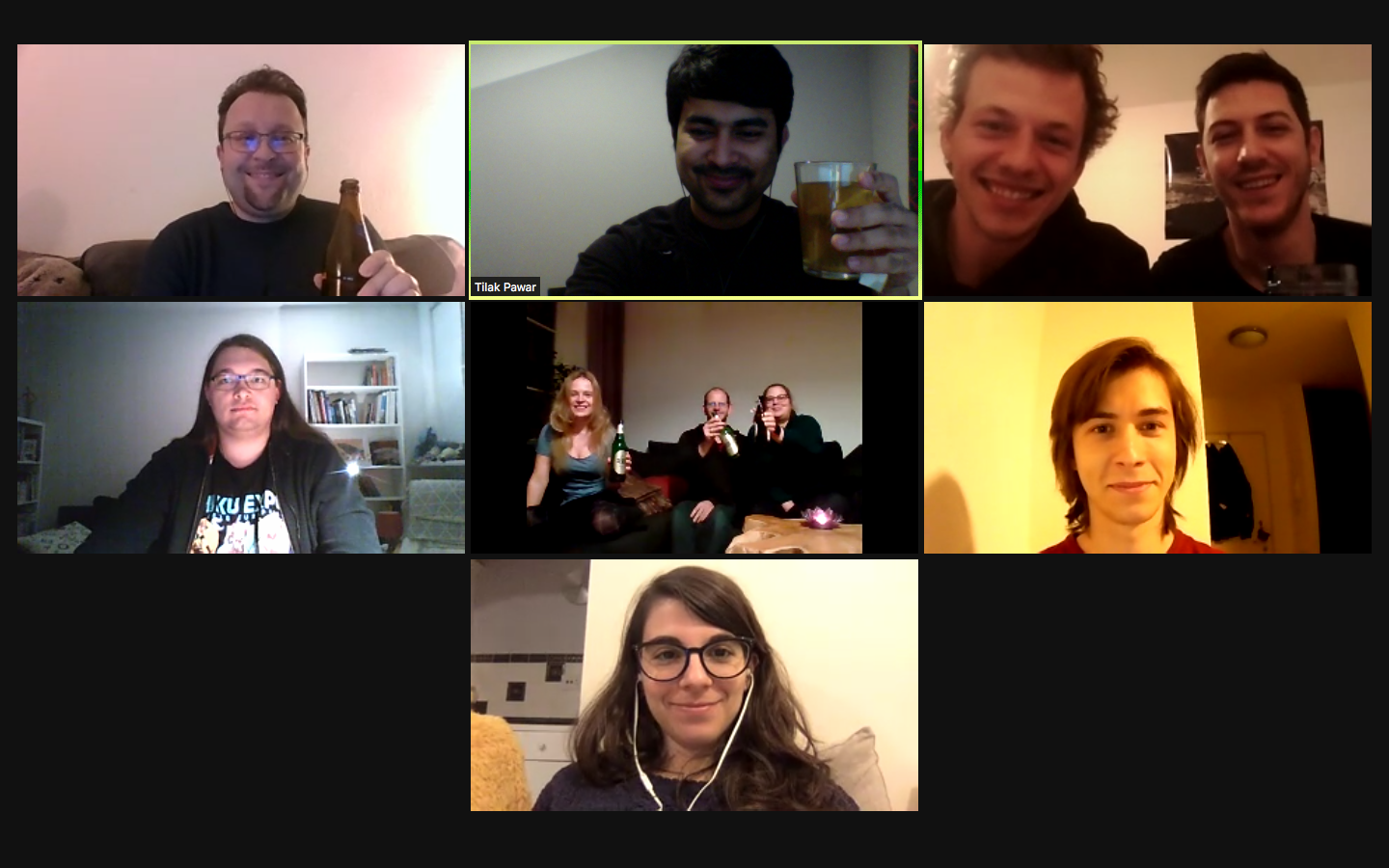
Farewell zoom party for known reasons.
On Januray 22 Alexander Bastian successfully completed his master's thesis entitled "Kinematics of hot subdwarfs". We wish him all the best for his future!
The prototype hot subdwarf + brown dwarf system J08205+0008 revisited in the Gaia era
January 18, 2021
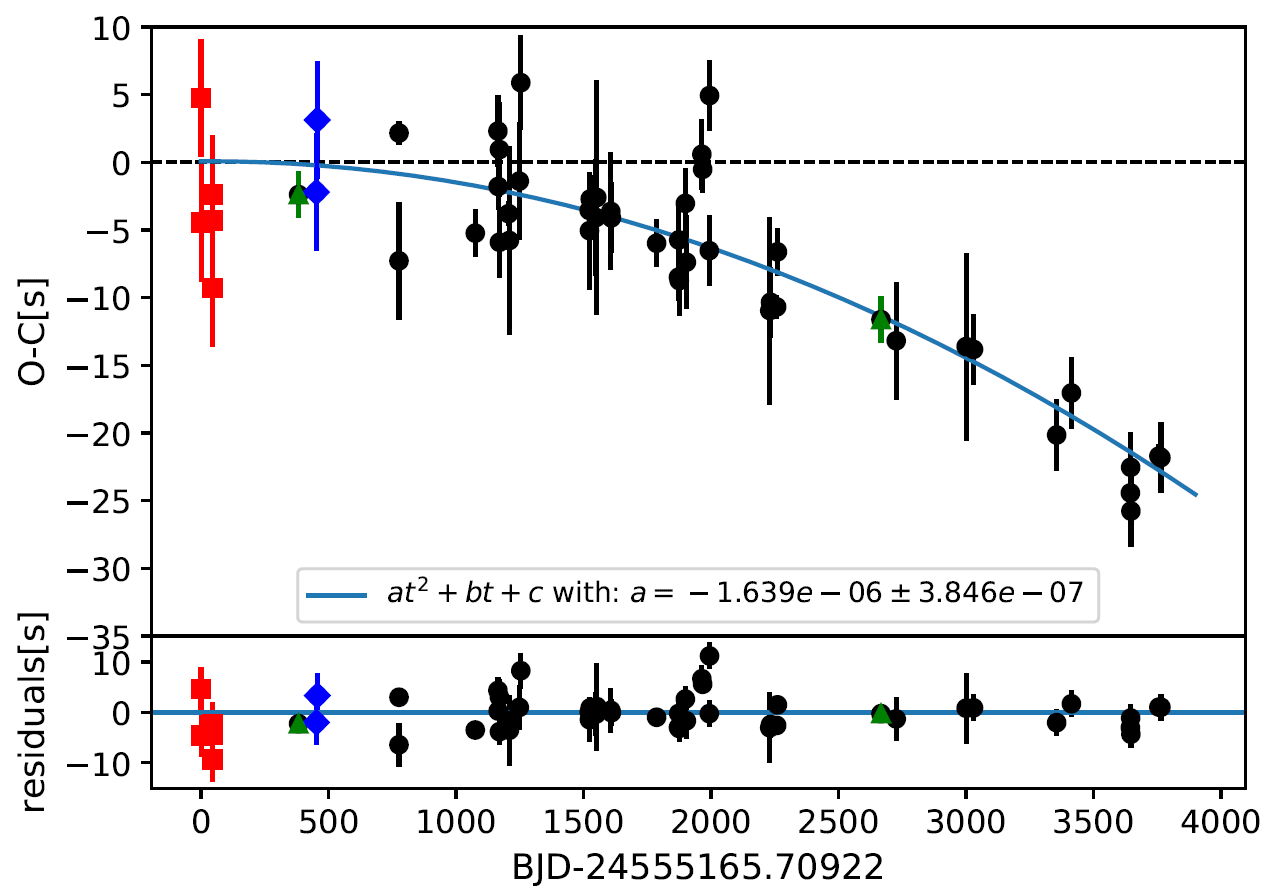
(Observed--Calculated) diagram for J08205+0008 using eclipse times observed with different telescopes showing the difference between the observed eclipse times and the predicted eclipse times at constant orbital period. The solid line represents a fit of a parabola to account for the period change of the orbital period. In the lower panel the residuals between the observations and the best fit are shown.
Image Credit: MNRAS.
Hot subdwarf B stars are core-helium burning stars located on the extreme horizontal branch. Extensive mass loss on the red giant branch is necessary to form them.
It has been proposed that substellar companions - like brown dwarfs - could lead to the required mass-loss when they are engulfed in the envelope of the red giant star. J08205+0008 was the
first example of a hot subdwarf star with a close, substellar companion candidate to be found.
Veronika Schaffenroth and her international team now carried out an in-depth re-analysis of this important system with much higher quality data that allowed additional
analysis methods. Using high resolution spectroscopy and data from the Gaia space mission they could derive the chemical abundances, rotational velocity, and radius of the hot subdwarf.
Most interestingly, they detected a significant period decrease of the system from a long-term photometric campaign. The authors showed that this can be
explained by the non-synchronised hot subdwarf star being spun up by tidal interactions forcing it to become synchronised. From the rate of period decrease they
derive the synchronisation timescale to be 4 Myr, much smaller than the lifetime on the extreme horizontal branch.
The mass of the cool companion was found to be just below the hydrogen-burning limit, thus confirming that the companion is most likely a massive brown dwarf.
The study got now published in the Monthly Notices of the Royal Astronomical Society.